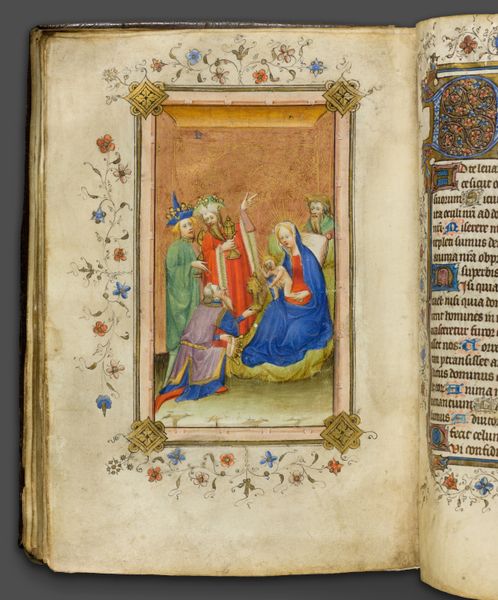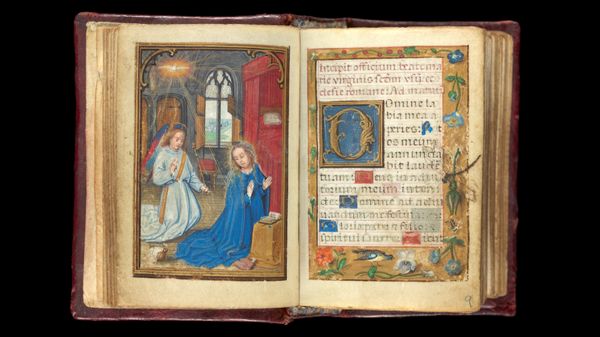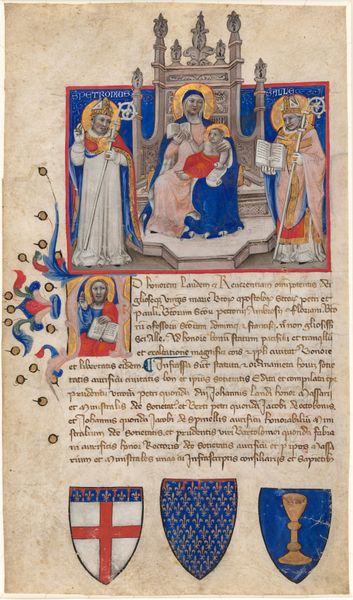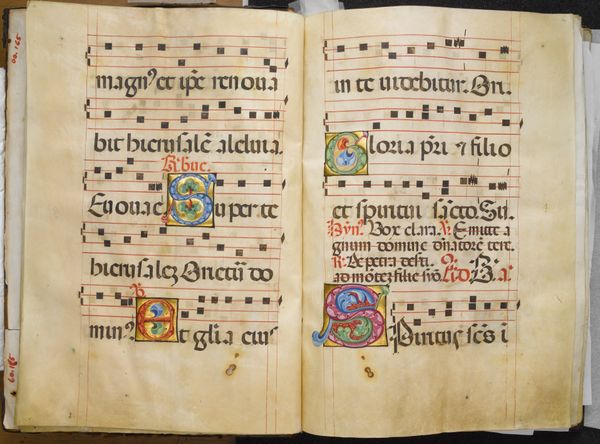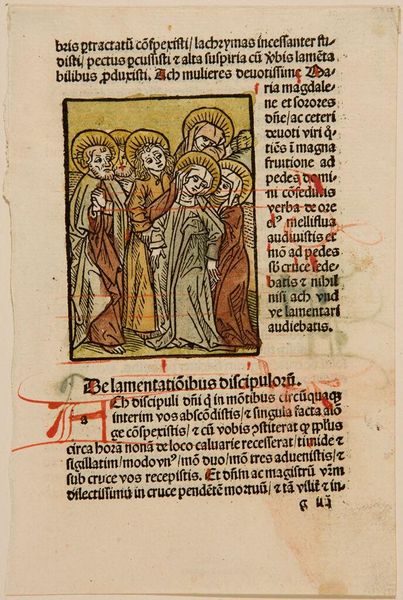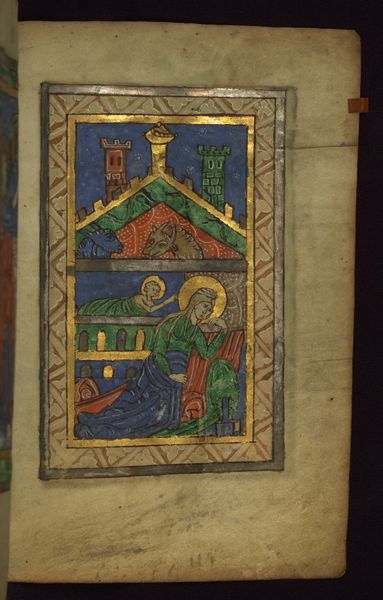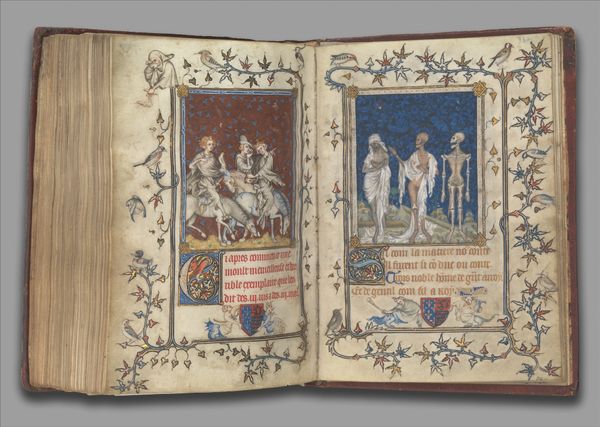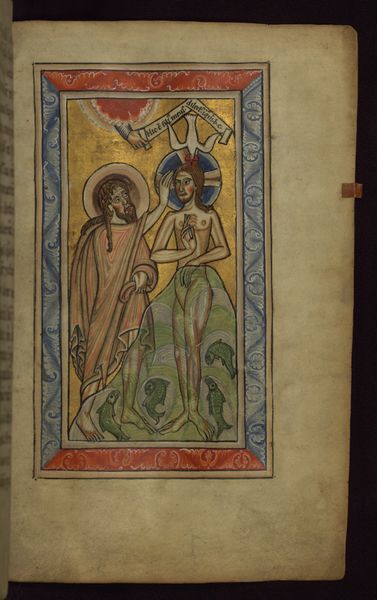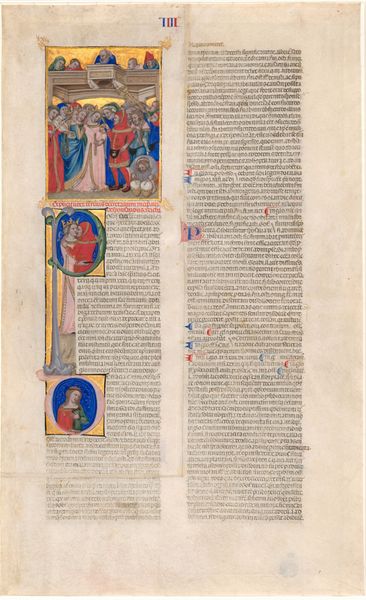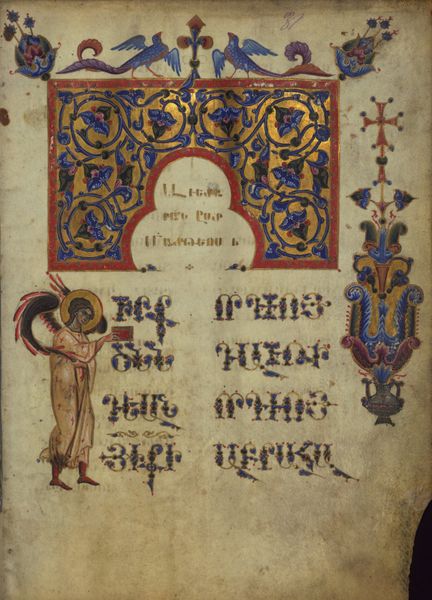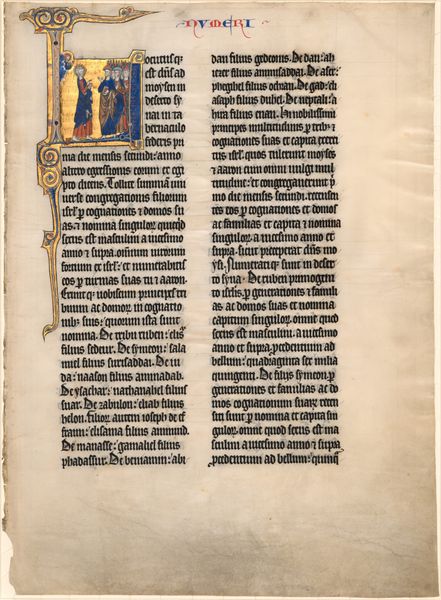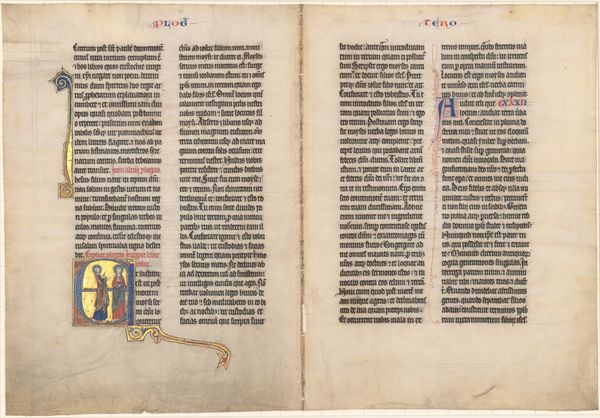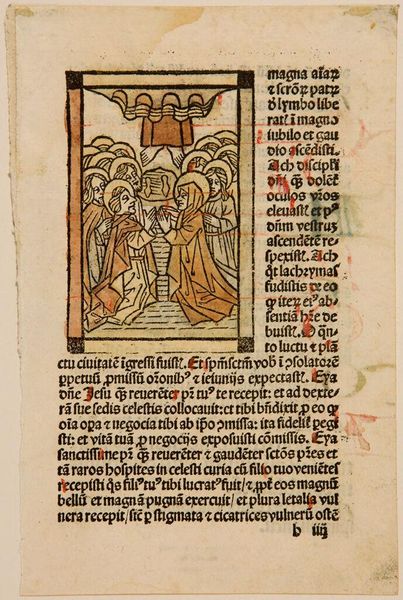
tempera
#
medieval
#
tempera
#
gothic
#
figuration
#
miniature
Dimensions: 12 3/8 x 9 1/16 in. (31.43 x 23.02 cm) (image)13 × 9 1/4 × 4 in. (33.02 × 23.5 × 10.16 cm) (closed)
Copyright: Public Domain
Curator: Here we have a page from a Dominican Missal, dating back to around 1300. The scene depicted is painted in tempera, and the overall effect, particularly on the left page, is quite striking in its formality. Editor: Yes, the gold leaf background against the vibrant blues and reds really makes it pop. It’s interesting how they rendered the crucifixion, almost flattened. What draws your attention most in this miniature? Curator: The power of familiar symbols within their cultural context. Take the gold background: its omnipresence refers to divinity and enlightenment. Though flattened, Christ, Mary and John's solemn depiction creates a shared cultural understanding for its viewers, a continuity. This visual shorthand was a tool to invoke immediate recognition and piety. Editor: So, it’s less about the realism and more about communicating a concept through accepted symbols? Curator: Precisely. Even the arrangement of the figures speaks volumes, mirroring compositions used for centuries. Notice the Virgin Mary to Christ’s left. It signifies compassion and her integral role in the salvation narrative. Do you find that knowing that impacts how you view her positioning? Editor: Absolutely. It's not just aesthetic; it's reinforcing doctrine visually. So, the repetition of these visual cues strengthens their message across generations. Curator: Exactly! Each element has a role, reinforcing memory and understanding. I wonder, do you feel a stronger connection to the past having considered all of this? Editor: Definitely. Thinking about the imagery not just as a picture but as a carrier of cultural memory gives it so much more weight. Curator: Indeed. The images speak of cultural values that were clearly treasured then, and that connection is still accessible today.
Comments
minneapolisinstituteofart about 2 years ago
⋮
Crucifixion scenes are among the few painted miniatures typically found in missals, the books that guide priests celebrating Catholic Mass. This exquisite Crucifixion appears at the start of the canon, the most solemn part of the Mass. The pen-flourished initials C and M on the facing page are enhanced with fine linear embellishments in red and blue. The rest of the text is written in a late-medieval script called littera textualis, which emphasizes the word unit rather than single letters. This missal once belonged to the Dominican convent of Heiligen Kreuz (Holy Cross) in Regensburg, Germany—hence the tiny Dominican monk at the base of the cross. The convent was founded in 1233, eleven years after Saint Dominic’s death.
Join the conversation
Join millions of artists and users on Artera today and experience the ultimate creative platform.

